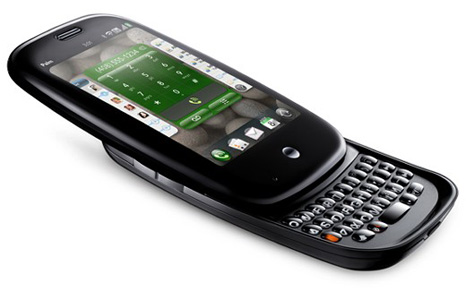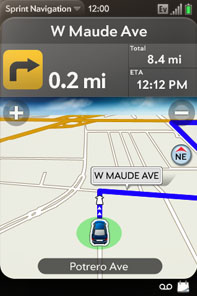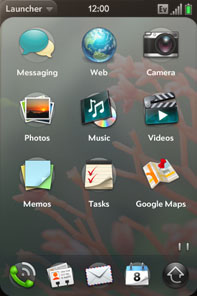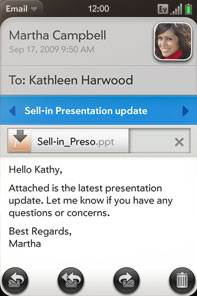
Announced way back at CES, this phone has been making its way around the Internet ever since. With its eminent June 6th release, I figured there would be no better time than now to give my thoughts on the device.
Hardware
I like the design of the device, it is very sleek and smooth looking. I do like the fact that it has a slide-out hardware QWERTY keyboard which the iPhone lacks. My one concern is that the keyboard will be very cramped. Maybe they should have gone with a width-wise slide out instead of height-wise and it wouldn’t have had to be so small. As it is, the keys on most Palm devices are very small and close together and the Pre does not deviate from that.
The Pre has a 3.1″ touchscreen display with a 480×320 pixel resolution. Below the screen is a black gesture area for more controls, and there is a single button under the screen just like the iPhone.
There is a 3-megapixel camera with an LED flash. It has a removable battery, built-in Wi-Fi b/g, Bluetooth, light and proximity sensors, accelerometer, large speaker on the back, 3.5mm headphone jack, MicroUSB port for charging/data transfer, built-in GPS (with software), 8 GB of built-in storage for apps and media with no card slot for expanded memory.

Software
The Palm Pre is running a custom OS that Palm developed for this device and newer ones that will be released after the Pre. It is called webOS because most of its apps are based on existing web programming technologies. The OS is built on a Linux core and the apps are coded with HTML, CSS, and JavaScript.
The UI is truly beautiful and very colorful. They use subtle drop shadows and transparencies to really accentuate the interface. It is all touch and gesture-controlled, and they really tried to make it as intuitive and responsive as possible.

They’re working on a system they call Synergy which will merge or stack your contact information compiled from multiple sources so that you don’t have to manually keep one master contact list. It can pull contacts from Facebook, Gmail, and Outlook amongst other things. It looks for duplicates and tries its best to remove all the headaches for you. They are also using this technology to merge conversations across multiple services. Let’s say you’re sending SMS messages with a friend and then switch to AIM later, it will keep all the messages in a single thread so nothing gets out of context.

Palm legacy apps will run via an emulation engine coded into the OS. This is great news for old-school road warriors who have tons of Palm apps.
The built-in web browser is built on WebKit, so it will probably render the web very comparably to the iPhone. Palm is shooing to have a Flash plugin by the end of the year which will put this device leaps ahead of the iPhone in web usability if they can get it working right.
And the best thing yet is that they built it to be able to handle multiple simultaneous applications. You switch between open apps using a deck of cards type interface. You can flip through apps, and rearrange them just like you would cards in a deck.
The Pre looks to be the stiffest competition facing Apple right now. After the Blackberry Storm failed to live up to the hype, all eyes are on the Pre. It is going to be released on June 6th on the Sprint network for $199 with a 2-year contract and after a $100 mail-in rebate. I’ve heard it will be available on Verizon and AT&T starting in 2010. So far the only major US carrier to not announce it is T-Mobile.
WWDC is next week and if Apple’s rumored new iPhone fails to wow, they might seriously have to worry about the Pre. People are very upset with AT&T’s service, and this is launching when a lot of original iPhone owners’ contracts are due to expire. I for one can’t wait to get my hands on the device and actually play with it at a Sprint store. I’m also looking forward to playing with the SDK, I made a couple of iPhone apps and would like to learn a new platform. Hopefully, Palm supports the developer community and offers tools the same way Apple does. I’m interested in seeing how this all plays out.